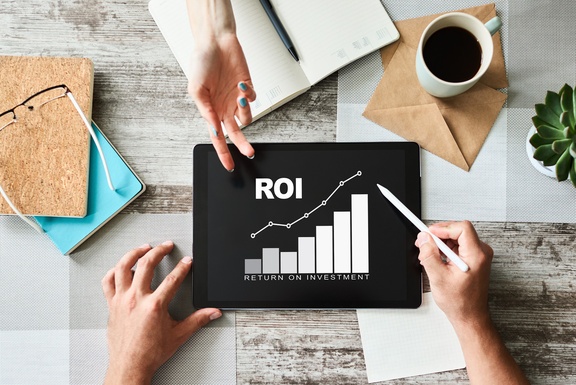Imagine spending a lot of money on an investment. You’d want to know how it’s performing. What’s working and what isn’t? Whether it’s a stock, a degree, a tool, or another asset, you don’t want to waste your hard-earned dollars. You want to generate a good return on investment (ROI).
This same truth applies to the world of mergers and acquisitions (M&A). Along with any follow-up investments that companies and partners make in these transactions. Globally, M&A deals exceeded $3.2T in value last year. That’s a lot of investments, and those investors want to know they’ve made the right choice.
That’s where invested capital analysis becomes important.
What Is Invested Capital, and Why Is It Important?
Invested capital is the total amount of money that’s invested in a company by both equity and debt holders to generate returns. It’s a critical figure that reflects the resources available to a company. This allows it to pursue business projects and generate profits.
Role on a Company’s Balance Sheet, Valuation, and Operations
Balance Sheet Impact
- Invested capital appears on the balance sheet and includes equity (common and preferred stock) and debt (long-term and short-term). This helps provide a better view of the financial resources a company has at its disposal.
- It’s a measure of the total funds used for a company’s operations and capital investments.
Valuation
- Essential in valuation models such as Discounted Cash Flow (DCF), invested capital help determine return requirements.
- It also helps in assessing the company’s capital structure. This helps measure efficiency in using capital to generate returns.
Operations
- Management teams use invested capital to fund day-to-day operations, R&D, and strategic growth. It’s vital for moving a business forward.
- Plays a crucial role in decision-making regarding capital allocation and budgeting.
Importance of Investing Capital Efficiently
Maximizing Returns
- Efficient capital investment helps ensure that the funds are allocated to projects with the highest potential returns.
- Helps in optimizing the balance between debt and equity. This can help minimize the cost of capital and depends on the industry.
Risk Management
- Proper investment strategies reduce the risk of over-leveraging and can improve financial stability.
- Effective use of capital can cushion the company against market volatility and economic downturns. Preparing for different business cycles can reduce risk.
Growth and Expansion
- Efficiently invested capital supports sustainable growth and expansion opportunities.
- Provides the resources for innovation and competitiveness in the market.
What About Return on Invested Capital (ROIC)?
ROIC is a profitability ratio that measures how effectively a company uses its invested capital to generate profits and growth. It’s a key indicator of financial performance and strategic efficiency. Here’s what it can help investors with:
- Profitability Assessment: ROIC helps investors determine how well a company is using its capital to generate earnings. A higher ROIC indicates a more efficient use of capital.
- Performance Benchmarking: Enables comparison with industry peers and benchmarks to assess relative performance. This helps find best practices and areas for improvement in capital allocation.
- Investment Decisions: Informs investment decisions by highlighting companies with better capital efficiency and profitability. This is a critical factor in evaluating investment opportunities and portfolio strategies.
ROIC Definition, Formula, and Examples
- Definition: ROIC measures the return earned on the total capital invested in a company. Instead of looking at individual projects, it looks at the larger portfolio.
- Formula: ROIC = Net Operating Profit After Taxes (NOPAT) / Invested Capital
- Example: Suppose Company ABC has a NOPAT of $1 million and invested capital of $10 million. The ROIC would be $1,000,000 / $10,000,000 = 0.10. That’s a 10% return. This indicates that for every dollar of invested capital, the company generates a return of 10 cents.
ROIC Key Takeaways
Understanding and efficiently managing invested capital and ROIC can enhance a company’s financial health. This can make it more attractive to investors. As a critical measure of profitability and operational efficiency, ROIC offers valuable insights. It helps show a company’s ability to generate returns on its investments. Here are some key takeaways:
- Invested Capital and ROIC: Invested capital is the total amount of money invested in a company by equity and debt holders, used to generate profits. ROIC is a metric that measures how effectively a company uses its invested capital to generate returns.
- The Importance of ROIC: ROIC helps to provide a better picture of a company’s profitability and efficiency. This helps investors and managers to make better decisions about capital allocation and investment strategies.
- Experienced Advisors to Help Optimize: Navigating financial metrics like invested capital and ROIC can be complex. To improve the process, Acquinox Advisors can make it much easier. With deep expertise in M&A and strategic financial management, we offer tailored insights to enhance your company’s operational efficiency and profitability. This can boost your valuation and attractiveness in the market.
We hope that you’ve found this article valuable when it comes to learning about invested capital and ROIC. If you’re interested in reading more, please subscribe below to get alerted of new articles as we write them.
If you’re already well into an M&A deal or might be starting the process soon, feel free to reach out. At any stage, Acquinox Advisors can help you improve financial planning and metrics. This can help you boost your company’s valuation to lock in a better deal.





